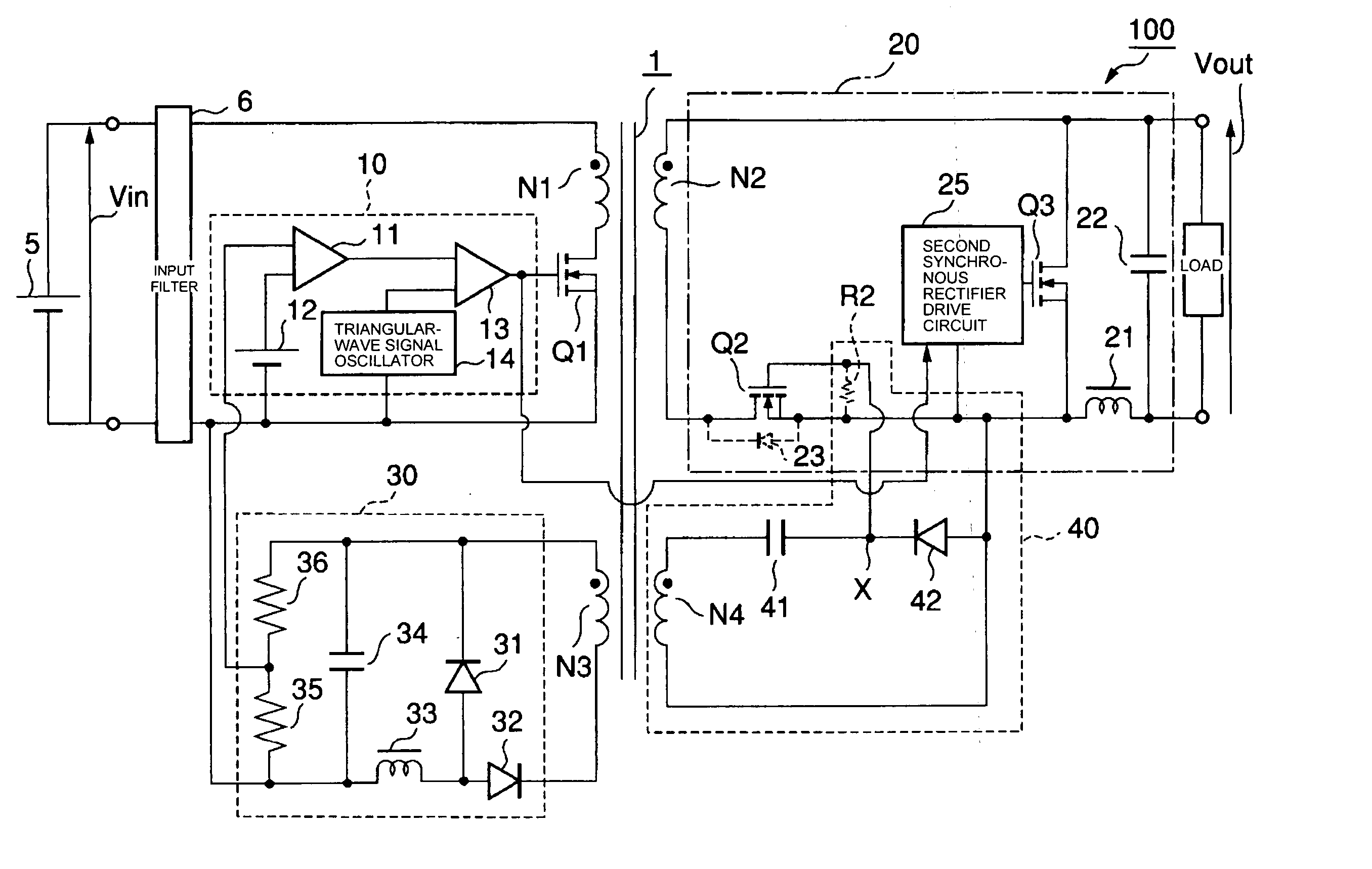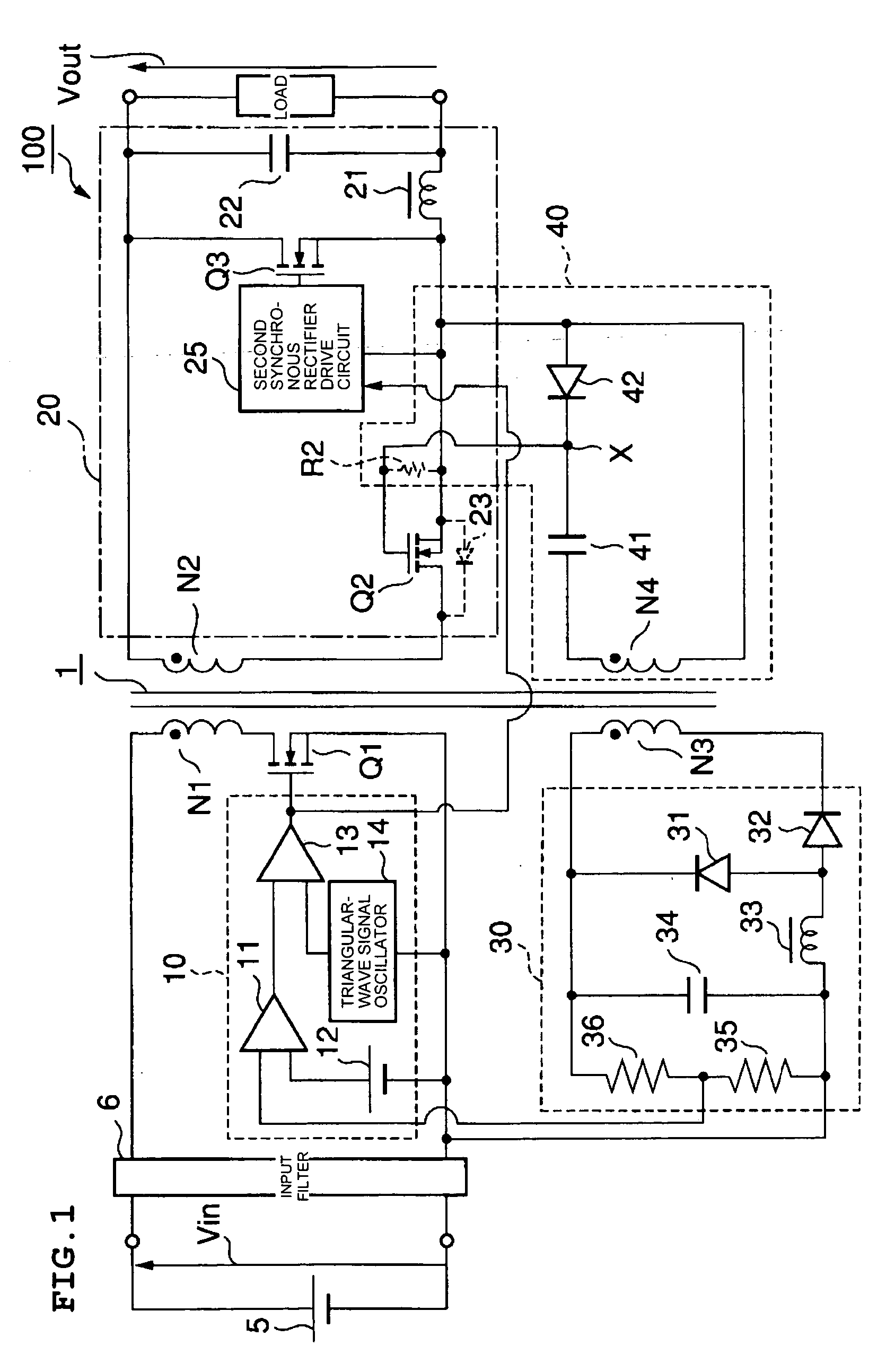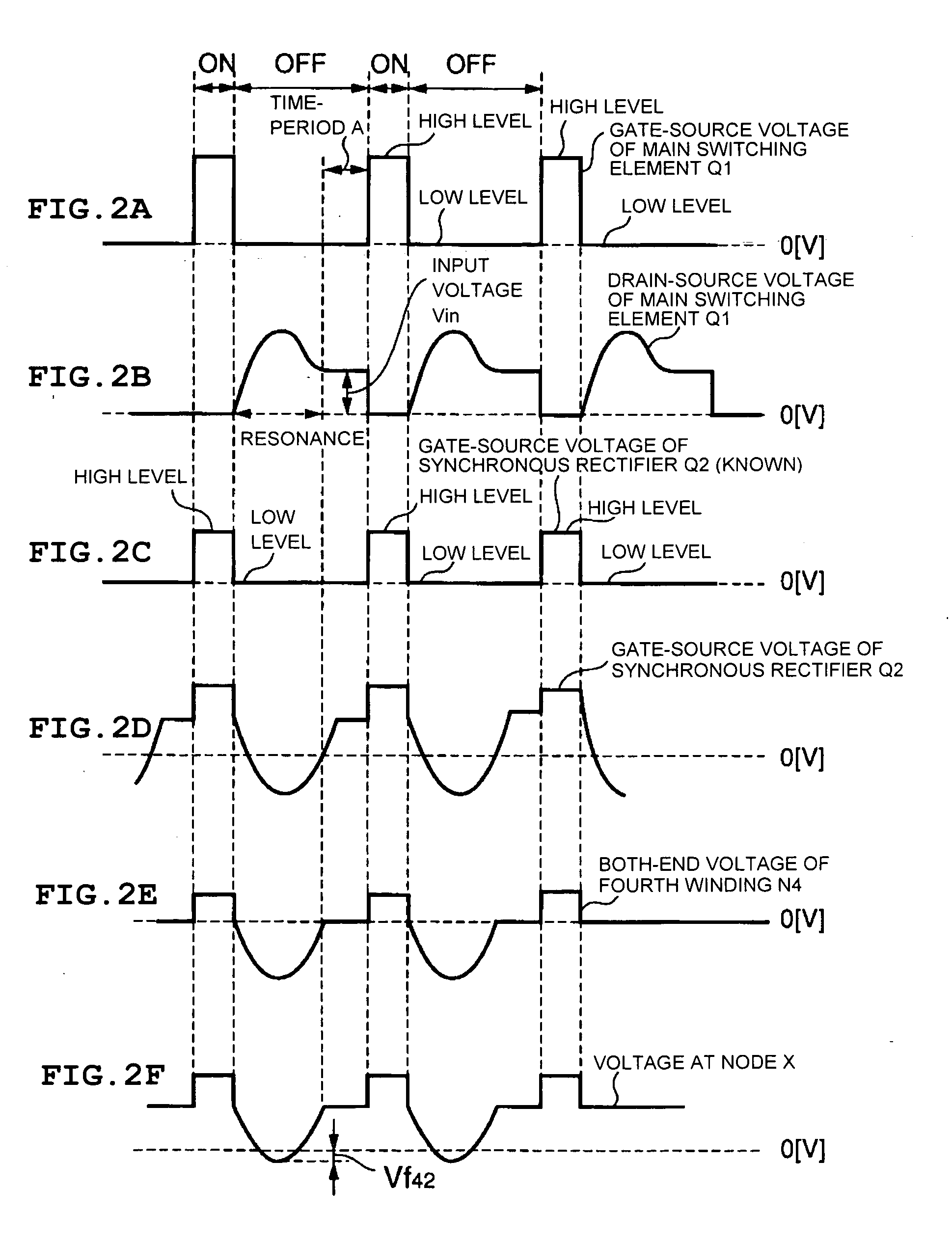Switching electric source device
a technology of switching electric source and output voltage, which is applied in the direction of dc-dc conversion, climate sustainability, power conversion systems, etc., can solve the problems of deteriorating detection accuracy of detection circuit with respect to output voltag
- Summary
- Abstract
- Description
- Claims
- Application Information
AI Technical Summary
Benefits of technology
Problems solved by technology
Method used
Image
Examples
Embodiment Construction
[0040] Hereinafter, preferred embodiments according to the present invention will be described with reference to the drawings.
[0041]FIG. 1 shows the main circuit components of a switching electric source device according to a first preferred embodiment of the present invention. In the description of the first preferred embodiment, the same components as those of the switching electric source device 200 shown in FIG. 9 are designated by the same reference numerals, and the description thereof is not repeated.
[0042] The switching electric source device 100 according to the first preferred embodiment includes of a forward-type DC-DC converter. In the switching electric source device 100, a transformer 1 is provided with a fourth winding N4 in addition to a primary winding N1, a secondary winding N2, and a third winding N3.
[0043] A circuit including a DC-cut capacitor 41 and a diode 42 as a rectifying element connected in series is connected in series with the fourth winding N4 with ...
PUM
 Login to View More
Login to View More Abstract
Description
Claims
Application Information
 Login to View More
Login to View More - R&D
- Intellectual Property
- Life Sciences
- Materials
- Tech Scout
- Unparalleled Data Quality
- Higher Quality Content
- 60% Fewer Hallucinations
Browse by: Latest US Patents, China's latest patents, Technical Efficacy Thesaurus, Application Domain, Technology Topic, Popular Technical Reports.
© 2025 PatSnap. All rights reserved.Legal|Privacy policy|Modern Slavery Act Transparency Statement|Sitemap|About US| Contact US: help@patsnap.com



